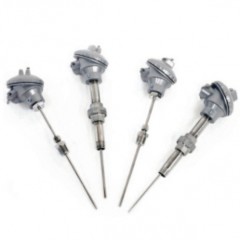Prisma Instruments provides RTDs with Nickel conductor in Mineral Insulated Construction. The basic difference between the conventional & Nickel conductor is material of conductor. In conventional, it is copper as against Nickel in Newly developed MI.
1- Most important advantage is that the RTD element is welded on to conductors and not brazed. As such same RTD can be used for much higher temperature of up to 600 degree celsius. In conventional RTD with copper conductor, brazing does not allow use of RTD above 450 degree celsius, after which brazing starts softening and RTD loses its contact with cable conductors. In Nickel conductors, as Nickel can be welded, contact is much more stronger even at higher temperature.
2- Nickel conductor cables are annealed at higher temperature than that of Copper. The cable therefore is much more softer. Hence RTDs made with nickel conductor are more pliable and easier to use
3- Nickel has much more strength than copper. Hence, they can be directly terminated in the terminal block avoiding another connection of flexible leads. RTDs with Nickel conductors give steady readings and chances of loose connection of flexible leads to copper wires is avoided.
4- As Nickel conductors are welded to RTD element, it is a much more stable design than brazed RTD. This advantage is very important in applications where vibrations are present.
5- Copper can get easily oxidised causing fluctuations in readings. Nickel being much more inert chemically, is not so prone to oxidation and hence gives stable readings over a longer period of time.

 English
English French
French